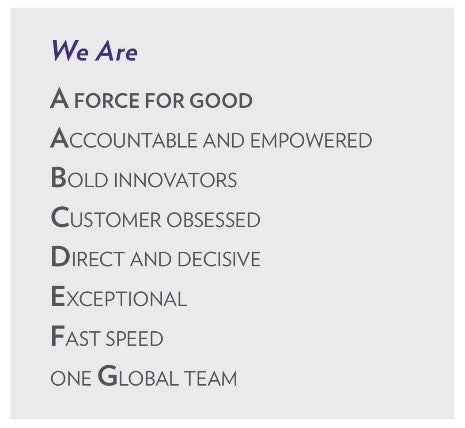How To Be Customer-Centric In Business
January 13, 2020

How To Be Customer-Centric In Business
“The customer comes first” is a reoccurring phrase that we hear in any job role. Whether working for a large corporation or a small “ma and pa” shop, the theory rings true: customer-centricity is vital in today’s growing consumer society. With similar products found on the market, the main distinguishing factor is often what brand is printed on the box. Customers trust companies over others and can remain loyal for years, so focusing on the customer’s wants and needs is key to a successful business.
What is customer centricity?
Customer-centricity means an organization that is customer-focused, right? In theory, yes. But being customer-centric goes beyond just being customer-focused.
Customers want products and resources that provide them with unexpected rewards and services. According to SAP, six customers out of ten cite this as a reason to stay loyal to a brand. When visiting a restaurant, servers are typically effective in serving what you ask for. But what if you never needed to ask in the first place? What if you had a server that brought you an appetizer before you even ordered anything? Unexpected exceptionality provides customers with a positive and memorable experience that leaves them wanting to come back. Customer-centricity prioritizes customer satisfaction before and after the sale and meets and exceeds the expectations of the customer.
“The customer is always right!”
According to a study by Deloitte and Touche, customer-centric companies were 60% more profitable than their counterpart companies that did not make this a priority.
Knowing the necessity of this principle, how can we help create more customer-centric businesses? How can we ensure the customer knows that “[they] are always right?”
A customer-centric culture
If your goal is to make an organization that is customer-centric, it’s important to cultivate a customer-centric environment. It all starts with a core value.
Nu Skin has defined its culture as the “The Nu Skin Way.” It describes both who we are today and who we want to become. It acts as a guide that clearly defines how to be the best we can be, with eight principles that describe the way we aspire to act.

Most employees at Nu Skin’s corporate campus carry a small badge that has the core values on them, standing as motivation and drive at work. We all strive to live the “Nu Skin Way” and customer obsession is a major focus. As stated in the Nu Skin Way:
“We place the customer at the center of everything we do. We rigorously research and intimately understand our customers, and we design all solutions with their needs in mind. We foster community and fierce customer loyalty through personalized customer experience at every touchpoint.”
Ensuring that all employees understand and live by the “customer obsession” mentality establishes more satisfaction from our customers, especially since the employees and sales leaders are the face of the company.
Customers and employees are at the heart of every business, and Nu Skin believes that in order to make the right decisions that align with its values, collaborative efforts to obtain information about how to better the company is crucial. “I believe success begins with listening,” said Ritch Wood, Nu Skin’s CEO. “We have to decide what we want together because it’s only as a team that we will achieve it.”
According to Diane Gherson, head of HR at IBM, employee engagement drives two-thirds of her company’s client experience scores. Without employees understanding and living the core values of customer centricity, (according to Diane’s results) two-thirds of an organization’s client experience scores would drop.
As much as your customers may love your current company’s products and culture, what prevents them from moving to the next competitor?
Innovation as a competitive advantage
According to a Mckinsey study, 80% of executives feel their business models are at risk of being disrupted by competitors. With a lack of innovation, many of these executive’s fear could become a reality. Through the constant investment of research and technology, companies can continue to create competitive products for their customers and do more than just appease them.
Consider a major leader in the tech industry, Apple. Apple originally started as a computer company in the 1980’s. Today, people are not just buying Apple computers, but you can’t go a day without seeing an apple watch or pair of Air Pods, or Apple TV, iPad, or the latest edition of the iPhone. Regardless of the product, consumers are eager to buy new Apple technologies and much of this is due to the innovation that these products offer.
With over 200 personal care products, Nu Skin has encouraged innovation from its very founding in 1984. Its devotion to research is guaranteed in the quality of its products created by state of-the-art laboratories and a network of 75 in-house scientists and over 150 world-class scientists representing institutions from across the globe. Thanks to these skilled scientists committed to innovation, Nu Skin releases devices and products that have changed the skincare and wellness industry. In fact, in May of 2019, Nu Skin’s facial cleansing device ageLOC LumiSpa was awarded the World’s #1 At-Home Beauty Device System Brand*.
Nu Skin customers continue to love these innovative products and the company is always striving to make an impact in the industry.
Consider your own business and potential innovation within it. How will you make a difference to satisfy your customer’s hunger for new and state-of-the-art products and services?

8 Customer-Centered Strategies
You now understand the need to create a customer-centric company, but how can you go about doing so? Consider this list of possibilities:
- Understand your customer in order to cater to their needs. It is important to identify your customer’s wants, fears, desires, and needs. To send an effective message to your customer properly, you can create an imaginary profile of your target audience. Provide the right message by creating a persona of your ideal customer’s demographics and psychographics. Your customer won’t recognize the benefits that you are offering them unless you communicate the right message to them that is catered to their needs.
- Through years of research and analysis, Nu Skin customer experience experts created different customer personas. We continue to update and adapt these personas according to new information found in surveys and interviews.
- Segment your ideal customer to provide the most reward for the company. Research conducted by Frederick Reicheld of Bain Company found that when customer retention rates were increased by 5%, profits increased from 25% to 95%. It's beneficial to invest in the retention of your current customers over finding new ones, but even more important to understand the difference between those loyal customers versus potential customers. Customer segmenting starts with understanding the value of the customer and what the cost is for acquiring them.
- Build according to your customer’s wants and needs. After understanding what your ideal customer wants, build your website with messages that provide answers to their problems. Use Google Analytics and Google Tag Manager to watch how your customers, interact with your page. The more user-friendly and accessible your website is, the more likely current and potential customers will be to stay on your page.
- Most companies invest in surveys to better understand what customer needs are, and how they respond to the motives of the organization, but are they providing a survey in all aspects of the marketing funnel? Nu Skin has been discovering the need to provide surveys in several areas of their website, to improve the user experience.
- Create an on-boarding strategy for your customer to provide a simple purchasing process. On-boarding is a system set to easily inform customers of products and services catered to their needs. Customer-centric companies make it easy for their customers to interact with the company through on-boarding strategies like Chat Box.
- Survey your customers to understand what needs to be improved. We can’t live in an ethnocentric environment where we do not understand our customers. The simplest way to cater our products to customer needs is to simply ask our customers. Make note: when creating a survey, you need to ask the right questions to receive the right answers.
- Nu Skin has annual surveys sent to thousands of customers world-wide. This year, 117,534 customers were invited to participate. With questions in over 52 different areas, these annual surveys help Nu Skin create better results for what customers want, and helps the company better understand its pain points.
- Invest in the right tools in order to take advantage of opportunities. To meet customer needs and expectations, businesses need to hit the bar when it comes to technology and tools. If there are no investments in resources that strengthen efficiencies and improve customer experience, competitors will gain this advantage over you. Vince Perfetti, Chief Transformation Officer at Nu Skin said, “When your technology continues to be the impediment of driving business value, changes need to be made. Technology is continually evolving and requires organizations to value workforces and tools that have an appetite for learning and growth.”
- Test your results to save money and time. You’ve conducted the research, you've spent budgeted money on your plans, but how do you know you’re receiving ROI on your new strategy? It's vital to continue to test and experiment in order to push customer-centricity.
- Innovate results for your customer continually. Consumer landscapes are constantly shifting, which means personal connections are becoming increasingly important and innovating results are crucial. According to Viima, a comprehensive statistic site, 19 out of 20 product innovations fail. Don’t be discouraged if your attempts fail… it happens to the best of us. Learn from your mistakes and create a legendary innovation that makes your customers obsessed with your business.
Conclusion
At Nu Skin, we realize it all starts with creating a customer-centric environment. The Nu Skin Way is not just a statement; it is something we live by. We are taking steps to become more aware of our customer's needs and wants and to create a mentality of "customer obsession".
“To be a customer-centric business means to deeply understand and consider your customer. You need to empathize with their problems and desires to deliver to their wants and needs. Strategies and tactics may vary depending on the size and resources of each business, but the resounding principal is the same universally: customer-obsession is key.” -Ryan Napierski, Nu Skin President
* Euromonitor International Ltd; Retail Value RSP terms; all channels; 2017 and 2018. Includes at-home Skin Care Devices exclusively paired with topical consumable of same brand. Based on Euromonitor custom research methodology, Jan/Feb 2019. Includes electric facial cleansers as defined in Passport database; does not include hair care/removal, body shavers, or oral care appliances.
-
According to LinkedIn’s Talent Trend report, 85% of the global workforce would be willing to change their job for a better opportunity. Even further, 45% of those individuals are totally open to considering a new opportunity when approached by a recruiter. That’s a lot of people who are potential employees for new positions.
-
Can you recall the days when online social sharing didn’t exist, advertisements were only in print and on TV, and cookies were just the baked goods your grandma would make on the weekends? These seemingly ancient days are far behind us as social media continues to evolve every day.

